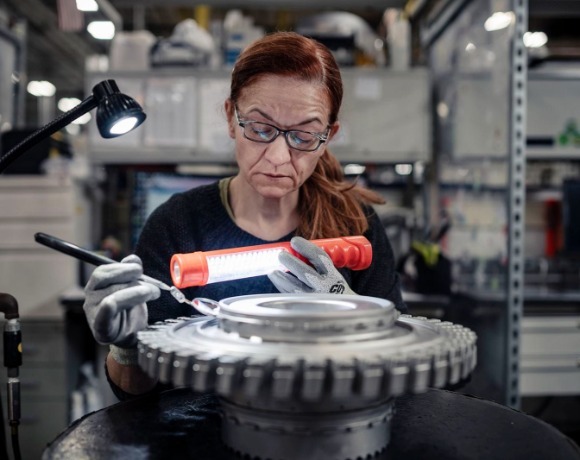in Aircraft values, Lease Rates & Returns , Lessors & Asset managers
Tuesday 20 June 2023
Pratt & Whitney mulls further LLP escalation hike

Ishka understands that engine manufacturer Pratt & Whitney is mulling a further hike in escalation costs for Life Limited Parts (LLPs) in October 2023 for the V2500 engine.
A source tells Ishka the OEM has already reached out to key suppliers about a possible early escalation rate increase in October but added that the size, and full scope, of the potential cost increase is not yet known.
Suppliers are already wondering whether the potential escalation hike later this year may be a precursor to another price increase in January – the month when the OEM typically reviews its escalation policies.
Pratt & Whitney did not respond when contacted by Ishka.
What escalation costs may mean for lessors
One of the key talking points at Ishka’s Engines, Freighter & Part-Out Trading Summit held in Dublin was the rapid increase in MRO costs and what this may mean for lessors. One of the big drivers of the cost increase has been OEM LLP escalation costs which Ishka understands has risen for CFM56-5B and 7B engines by approximately 12% while the stack on the V2500 has increased to around 12% currently.
Engine OEMs calculate LLP escalation based on a formula which factors in labour costs, the price of raw materials and energy costs, among other elements. There is also the desire to recoup some of the probable losses incurred from selling installed engines on a new aircraft at a heavy discount. Typically, engine LLP escalation has run higher than inflation but noticeably increased between 2022 and 2023 and is now double digits for CFM, Rolls-Royce and Pratt & Whitney.
One MRO source states that any further escalation cost could impact overhaul costs but states many airlines and engine owners are looking for short-build restoration visits to avoid having to invest in costly new OEM-manufactured LLPs.
“There are certainly fewer full-performance restoration shop visits with new LLPs at the minute. Instead, we are seeing a lot more short-builds, and interest in, what you can do to stretch an engine out for half a run or a third of a run to give 18 months, two or three- years’ worth of operations,” explains one source.
Will engine OEM LLP escalation rates stay above double digits?
At Ishka’s Dublin event some asset managers speculated whether, assuming interest rates stabilise or eventually fall, OEM LLP could drop back to single digits. However, others were more dubious.
“How much is it going to go down? When interest rates were 2%, OEM LLP escalation was already 8% - 9%. I don't think escalation’s going to go down. It's not just about a correlation with interest rates, it's also about supply chain costs. Raw material costs have gone up, everything's gone up,” reflects one asset manager.
OEM escalation increases the costs for lessors looking to overhaul engines, but the flip side is that it is also increasing the value of many older in-service engines. “If a year ago a core engine was worth a million dollars, but OEM escalation on the parts within that engine is now 12% - 15%, well then inherently you suddenly have an appreciating asset, right? The value of that core just went up, not down.”
Earlier this month Ishka reported that several aircraft asset managers were exploring spare engine leasing investments on the back of rising engine prices and lease rates due to MRO delays and parts shortages (see Insight: “Why more aircraft lessors are looking into engine leasing”).
The Ishka View
It is not guaranteed that Pratt & Whitney will escalate the cost of LLPs further in October but it appears there is every chance some form of increase is likely to be announced this Autumn. This raises other questions: How big will the potential increase be? And will it be followed by a second increase in January? Or is the OEM simply adapting the schedule when it reviews escalation?
Engine OEMs often rely on LLP escalation as a revenue generator as new engines are often sold heavily discounted. Given the issues surrounding the reliability and performances of many of the new-tech engines, including the GTF, among others, engine OEMs will be looking to increase income wherever possible.
For lessors and engine investors, the LLP escalation is just another cost increase among many recently set by engine OEMs. These include rumoured higher prices for aerofoils, engine blades, and nozzle guide vanes. Lessors typically include some form of escalation within their maintenance provision agreed within leases. The concern is that the maintenance reserve escalation set by even the most conservative of lessors could struggle to keep up with the escalation set by the manufacturer. Lessors therefore may face” top-up exposure” when aircraft are overhauled. For lessors that have leases with minimal, or no maintenance provision, set in their leases, the general costs for MROs, not helped by LLP escalation, are likely to be felt even more keenly and will significantly eat into their long-time returns if, and when, an overhaul is required.
* This story was updated on 5/07/2023 to change the escalation rate on the V2500 from 13% to 12%.



Sign in to post a comment. If you don't have an account register here.